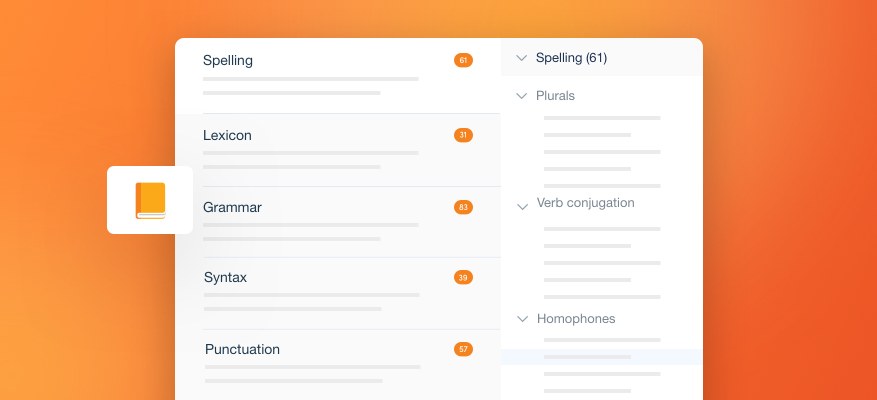Language Guides

Antidote comes with a number of language guides covering a broad range of topics relevant for writing in English. They contain several hundred articles which explain in detail the rules and conventions that govern English. Written in an accessible style, the articles describe these rules and conventions and illustrate them with well-chosen examples. The basic notions of English grammar are presented, and certain “tricks” are provided to help retain some of these. In each guide, the articles are structured according to themes and sub-themes, enabling you to quickly cover all the aspects of a given problem. An intelligent search function allows you to rapidly locate all the articles pertaining to a particular subject.
For questions of grammar, style, punctuation and typography, our guides draw inspiration from a number of authoritative references including The Cambridge Grammar of the English Language, the Oxford English Grammar, New Hart’s Rules, The Canadian Style and The Chicago Manual of Style. Letter writing information in the business writing section incorporates recommendations from the aforementioned style guides as well as the postal services of the corresponding countries.
The lexical and spelling guides cover many difficult problems, some well-known and others less so. In conjunction with the corrector’s style view, the style guide can help to improve the flow and tone of your texts.
The phonetics guide recalls the phonetic transcriptions found in the dictionary of definitions and the conjugations. It describes the principles of the English sound system, and in particular two of its regional variants: General American and General Southern British.
The historical guide is of a different nature; it is meant to support the historical dictionary. This detailed guide traces the evolution of English from its origins. A series of articles describe the many languages of the world from which English has borrowed. Each article is linked to the etymological contents of the historical dictionary, where you can learn, for example, that nomadic comes from Middle French, which inherited it from Classical Latin, which had borrowed it from Ancient Greek. Click the name of a language and the historical guide opens to the corresponding article.
It is this kind of interconnection with Antidote’s other resources that makes the language guides so valuable. In addition to the historical dictionary, when the corrector flags an error, it doesn’t just state its nature; it invites you to open the relevant guide directly to the article which explains the rule that has been broken. What better way to learn?